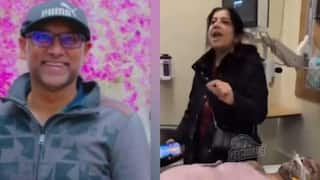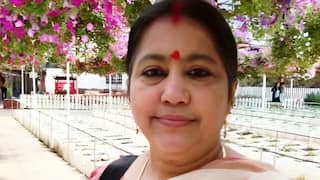The Science Of Health: What Is Egg Freezing? Here's What Experts Say About The Assisted Reproductive Technology
The Science Of Health: This week, in ABP Live's health column, we discuss what egg freezing is, how human oocytes are retrieved, and what the benefits of egg freezing are.

The Science Of Health: Welcome back to "The Science Of Health", ABP Live's weekly health column. Last week, we discussed what stem cells are, how stem cell transplants for blood cancers and disorders work, and what the challenges are. This week, we discuss what egg freezing is, how human oocytes are retrieved, and what the benefits of egg freezing are.
Egg freezing, also known as oocyte cryopreservation, is an assisted reproductive technology (ART) method that involves the hormonal stimulation of a woman's ovaries to extract viable eggs or oocytes via transvaginal retrieval, and subsequent freezing and storage in order to preserve reproductive potential in women of reproductive age.
Why is egg freezing done?
The technique helps a woman preserve her fertility so that she can try to have a family in the future. When a woman wants to have a baby, she can get her frozen eggs thawed in order to use them in fertility treatment such as in-vitro fertilisation.
As a woman grows older, her chances of conceiving naturally decrease. Therefore, egg freezing is a good option for a woman to preserve her fertility at a time when her eggs are healthy and of high quality.
Over the past few years, egg freezing has advanced greatly, and the overall success of eggs surviving the freezing process has improved.
ABP Live spoke to gynaecologists Dr Nisha Bhatnagar and Dr Vandana Ramanathan, and asked them about egg freezing, and the scientific procedure behind it.
Dr Bhatnagar is an MD in Obstetrics and Gynaecology, and the medical director at Infinite Fertility Wellness Centre, a specialised egg freezing facility in Vasant, Vihar, New Delhi. Dr Ramanathan is a DNB in Obstetrics and Gynaecology, has a fellowship in reproductive medicine, and is a consultant in reproductive medicine at Milann, an infertility centre in Bangalore.
According to experts, the age of marriage is getting delayed, and therefore, egg freezing allows a woman to take action while she is still young, and has eggs of good quality.
"Assisted reproductive technologies for females include steps such as ovulation induction, intrauterine insemination, and in-vitro fertilisation. Ovulation can be induced in a female who is not ovulating through medications. This is followed by intrauterine insemination, where the woman is artificially inseminated. The third step is in-vitro fertilisation. For all these steps, a male partner and a female partner are required. Of late, women have become more independent and career-oriented. Their age of marriage is getting delayed. They don't want to have a child at the right age, which is from late twenties to early thirties. Egg freezing is different from other techniques of assisted reproductive technology because the female does not need the other partner. She realises that her biological clock is ticking, and hence, takes action when her eggs are still young and of good quality. The woman freezes her eggs and then uses them about 10 to 15 years later. Another difference between egg freezing and other assisted reproductive technologies is that the latter methods are used when one of the two partners, or both are infertile. However, in the case of egg freezing, the woman is fertile, but she preserves her fertility for the future,” Dr Bhatnagar told ABP Live via call.
Therefore, there are two differences between egg freezing and other assisted reproductive technologies. The first difference being that a partner is not required for egg freezing, and the second difference is that egg freezing allows a fertile woman to preserve her fertility, while assisted reproductive technologies are used when either or both the partners are infertile.
Dr Ramanathan explained that the process of stimulating the ovaries during egg freezing is similar to the method used to stimulate the ovaries in the case of in-vitro fertilisation. After the eggs are retrieved, they are preserved in the in-vitro fertilisation laboratory. With ageing, a woman’s eggs also age, because of which their quality declines.
“Women who are not prepared to have a pregnancy for any reason, at a younger age, have an option of getting their eggs retrieved and frozen, for future use. These eggs can be used at a later date, maybe a few months later or even a few years later, to perform ICSI and make embryos,” Dr Ramanathan said.
Intracytoplasmic sperm injection (ICSI) is a technique in which an embryologist selects a single sperm from a semen sample and injects it directly into the egg for fertilisation. Meanwhile, in the case of conventional in-vitro fertilisation, a woman's egg is surrounded by sperm in a Petri dish, and eventually, one sperm fertilises the egg.
Dr Ramanathan said that women who intend to postpone pregnancy, or are undergoing treatment for other medical conditions such as cancer can opt for egg freezing. “It is best to freeze your eggs at a younger age, preferably before 35 years, so that you have adequate quantity and better quality eggs frozen, though, there is no particular age limit for the same.”
Thawing of frozen eggs and stage at which embryo is inserted into the womb
The frozen eggs must be thawed before they are used for in-vitro fertilisation. After the embryo is formed, it will be transferred into the uterus of the woman.
Dr Bhatnagar explained that the embryo can be transferred into the body of a woman two to three days after fertilisation, when the embryo has six to 10 cells, or five to six days after fertilisation, when the fertilised egg is called a blastocyst.
A blastocyst is a rapidly dividing ball of cells, and is composed of two differentiated cell types, the inner cell mass and the enveloping layer.
"The fertilisation process happens inside the fallopian tube. The natural habitat of the egg and sperm before fertilisation is the fallopian tube. After fertilisation, the embryo stays in the fallopian tube for about four to five days. Next, the embryo enters the uterus in order to implant itself into the uterine wall. So, the natural habitat of a day 5 embryo is the uterus, and that of a day 3 embryo is the tube," Dr Bhatnagar said.
A day 3 embryo may not survive if it is inserted into the uterus after in-vitro fertilisation. Therefore, many egg freezing speciality centres prefer blastocyst transfer.
Dr Bhatnagar said that mature oocytes are frozen as part of the egg cryopreservation. In mammals, the primary oocyte extrudes the first polar body before ovulation, and becomes the secondary oocyte. The mature oocytes are haploid, which means they contain 23 chromosomes each.
Dr Ramanathan explained that when women who have got their eggs frozen wish to conceive, they must undergo intracytoplasmic sperm injection, wherein the egg is injected with a sperm under the microscope. After this, the fertilised egg is cultured for three to five days in the laboratory under appropriate conditions. About three to five days after fertilisation, the embryo is transferred into the woman's uterus.
She said that embryo transfer is mostly performed for a day 5 embryo, keeping in mind that the day of egg retrieval is considered day zero. “On day zero, the sperm is injected into the egg. On day 3, the embryo will consist of six to eight cells. If left in the culture for another two days, they progress to form a blastocyst, which consists of an inner cell mass and an outer trophectoderm layer. The embryo can be transferred as a day three embryo or a day 5 embryo . The decision to transfer the embryo on day three or day five is made by the doctor after consulting with the couple and taking into consideration previous treatments undergone by them.”
Trophectoderm is the first layer of cells or epithelium that develops in mammalian embryos.
Check out below Health Tools-
Calculate Your Body Mass Index ( BMI )
Calculate The Age Through Age Calculator






































